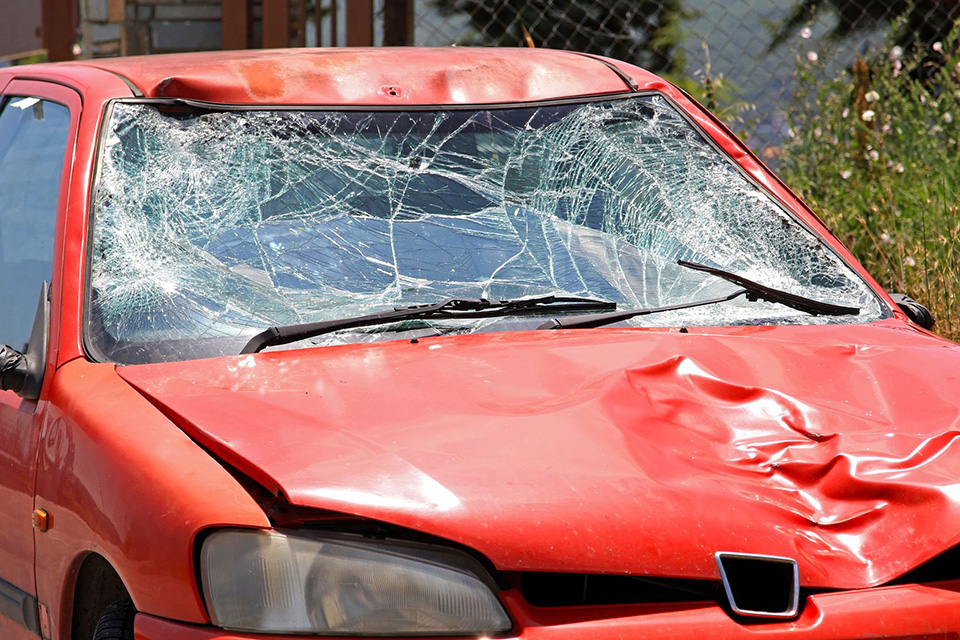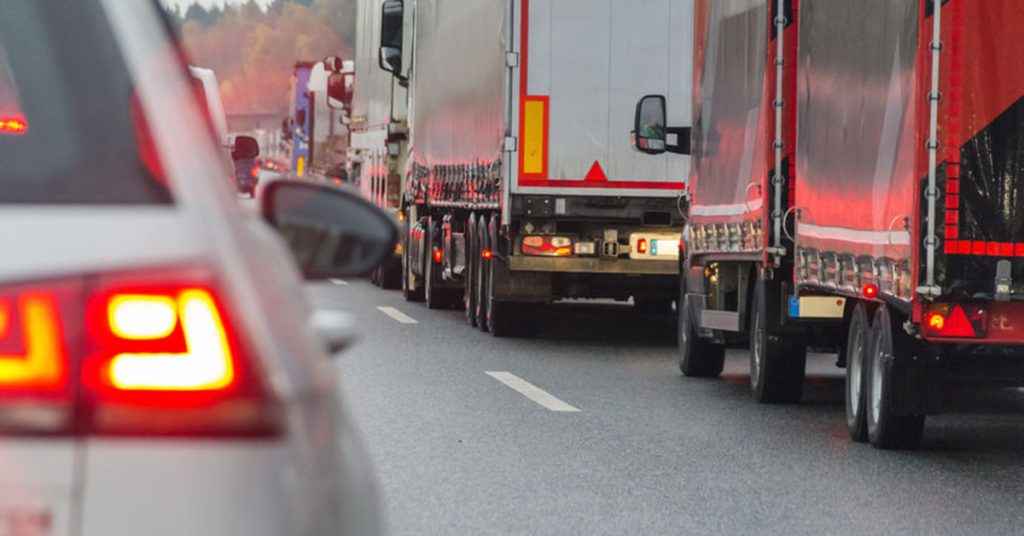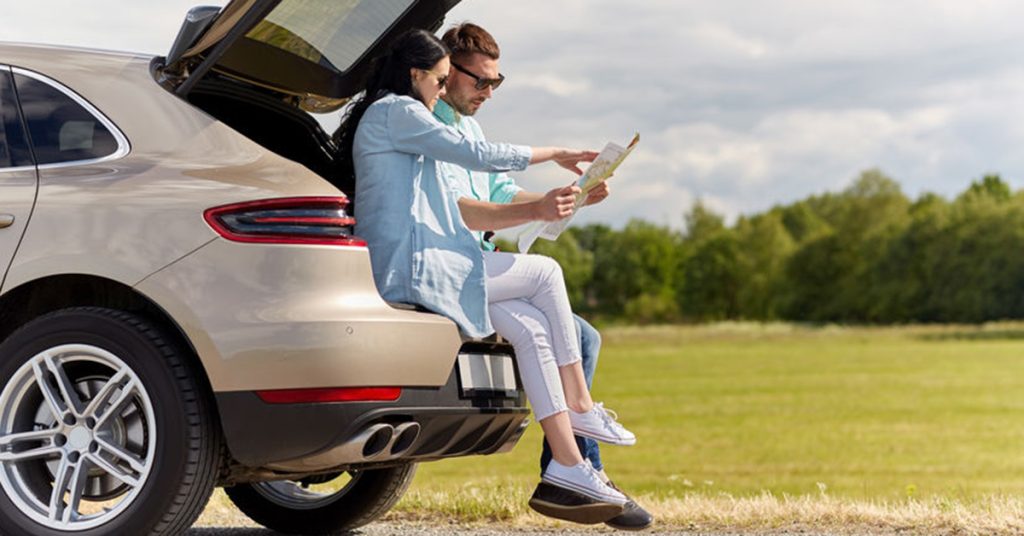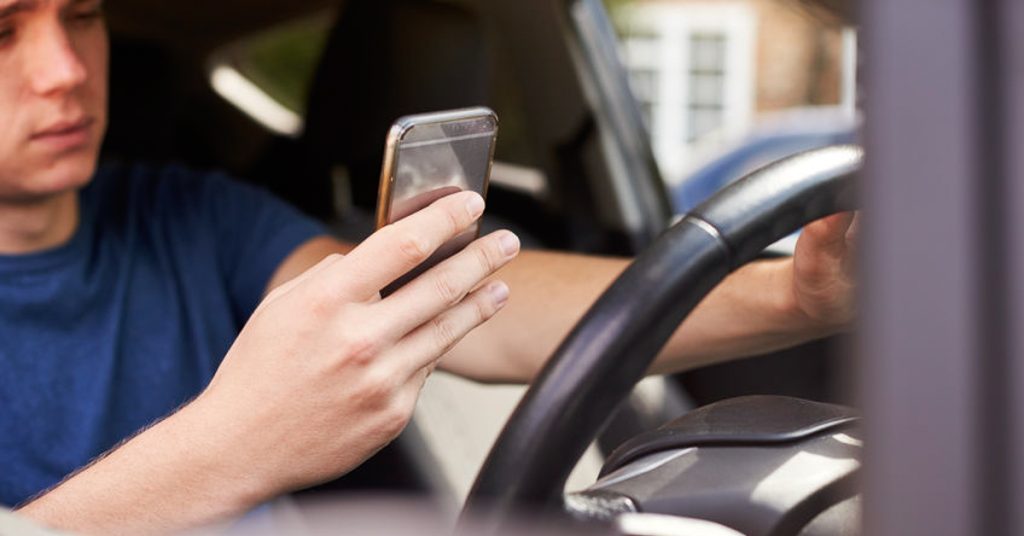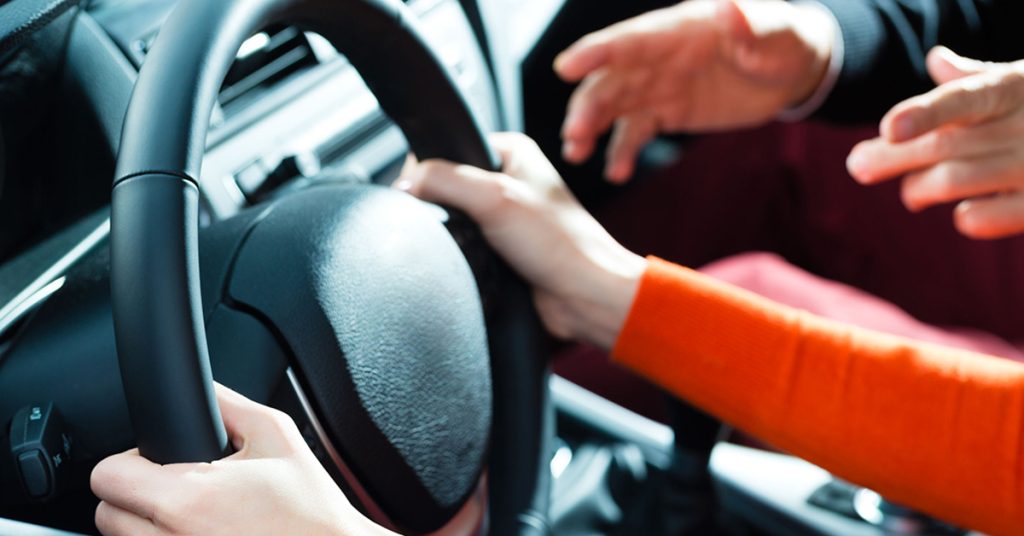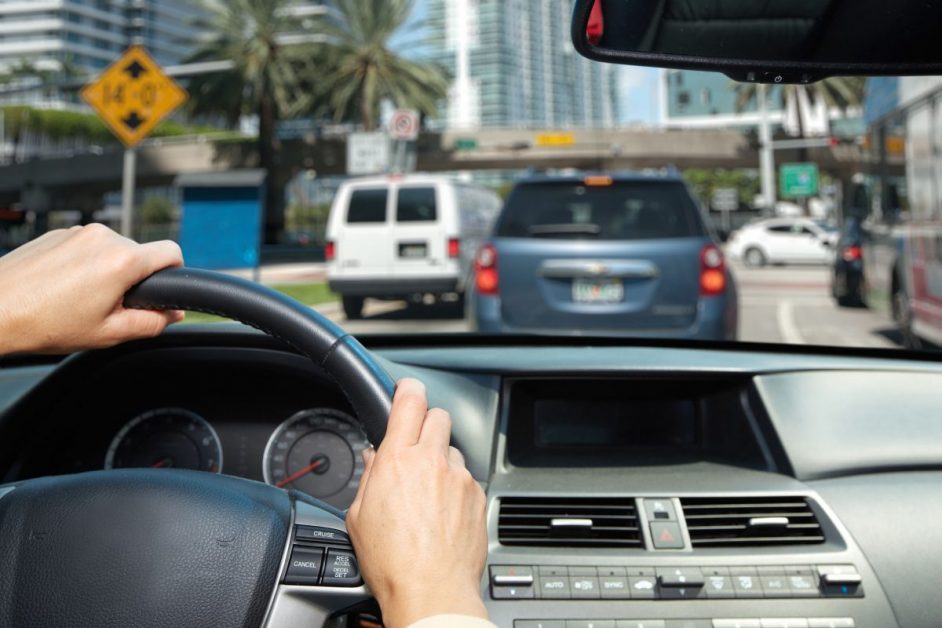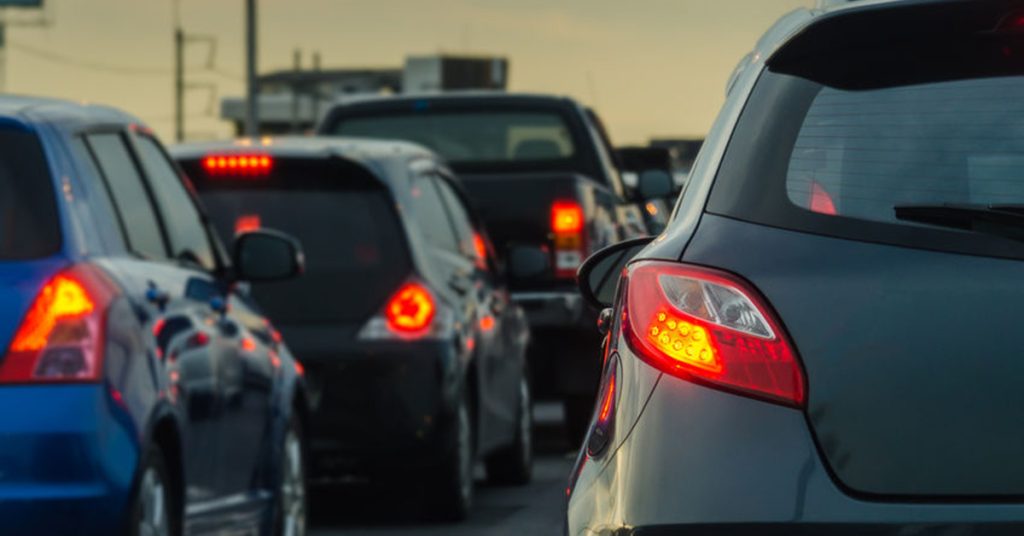Car Accidents
National Teen Driver Safety Week Offers Safety Reminders for Massachusetts Families
 Motor vehicle crashes are the leading cause of death for teens. Each year, National Teen Driver Safety Week highlights safety insights for families and teens. This year, the event runs from October 18-24th. We encourage you to follow the National Highway Traffic Safety Administration and Teen Driver Source for more information. Teen Driver Source is operated by the Center for Injury Research and Prevention at Children’s Hospital of Philadephia, which offers Facebook and Twitter feeds.
Motor vehicle crashes are the leading cause of death for teens. Each year, National Teen Driver Safety Week highlights safety insights for families and teens. This year, the event runs from October 18-24th. We encourage you to follow the National Highway Traffic Safety Administration and Teen Driver Source for more information. Teen Driver Source is operated by the Center for Injury Research and Prevention at Children’s Hospital of Philadephia, which offers Facebook and Twitter feeds.
According to the National Highway Traffic Safety Administration, the greatest dangers teen drivers face are: alcohol consumption, inconsistent or no seat belt use, distracted driving, speeding and driving with passengers in the vehicle. This year, COVID-19 has introduced a new concern. Teens are driving far less and risk losing core skills. This is where National Teen Driver Safety Week comes in as an important resource this year.
Driving Safety Contract. If you follow Teen Driver Safety Week, you may learn about teen driver contracts. You can also print this parent-teen driving contract from the Centers for Disease Control and Prevention (CDC). Make your own edits and ask your teen to sign as a condition for using your vehicle. Give your teen a copy of the document to file away and review. This is a good way to lay out expectations for your teens and what will happen if they violate the agreement.
Make Sure Teens Get Enough Driving Time. If teens are not driving as much during COVID-19, they risk falling behind on fundamental skills. To prevent this, encourage your teen to drive regularly. When you go out with your teen, split the driving responsibilities so you know they are logging at least some time behind the wheel and you can monitor their progress.
Hold back judgment and sharp comments if you see some of their skills have regressed. This may happen. Just help them get practice in where they need it. Take advantage of empty parking lots and slower times of the week. You can get them back on track.
Drive Around Town With Your Teen. When you can, walk and drive around your community with your teen, including during the morning and afternoon commutes. This gives your teen a preview of what may come when they pull out of the driveway alone. You may see more pedestrians and cyclists in areas. You may see parking changes and restaurants offering sidewalk service. Share observation with your teens and try to make helpful suggestions to help them drive safely and avoid car accidents.
Stress the Importance of Slowing Down. Speed is a factor in nearly 30 percent of all fatal crashes involving teen drivers, according to AAA. Teens often have a heavy foot on the gas pedal and this only changes as they gain experience. For now, if teens can simply slow down, they can significantly reduce their risk of a collision.
Start by helping your teen recognize speed limits because they are not always posted right in front of them. While they should have learned this in driver’s ed, new drivers can use a reminder from time to time. Massachusetts sets a default speed limit of 30 mph in thickly settled and business areas, unless posted otherwise or an individual community has opted to lower the speed to 25 mph. School zones and work zones are 20 mph.
Encourage your teen to travel at or below the speed limit, especially in residential neighborhoods. By doing so, they reduce their risk of causing a car accident due to inexperience in the first few months or year of driving. They reduce their chance of causing themselves or someone else serious injuries and all the emotions and stress.
Reduce Distractions. Slowing down is the most effective tool for safe driving. It’s also important to reduce distractions. This means setting aside cell phones and limiting conversation with passengers in the vehicle. Sure, your teen is going to engage in discussion with others in the car. But try to make conversation lighter and focus more on observation, such as, “I see cars backing up at the traffic light ahead” or “there is an ambulance coming.” Save heavy discussion for before or after the drive.
Safety Steps Near Pedestrians and Cyclists. Teens may struggle to drive near pedestrians and cyclists. Every few weeks, drive through school zones and busy areas with your teen again, just as a refresher. Show them how you stop at crosswalks for pedestrians and leave room in anticipation of pedestrians. Instead of chatting at traffic lights, use this time to show your teen how to check for cyclists. More and more people have been cycling over the past decade in Massachusetts. This likely increased during COVID-19 and will likely continue. The reality is cars are not the only vehicle on the roads. Cyclists have the right to travel in the road too. You can really help your teen by teaching them to look for cyclists.
Buckling Up. Teens and young adults have the lowest rates of seat belt use, according to the CDC. Almost half of all drivers age 15-20 who died in car crashes were not wearing seatbelts in 2017, according to the CDC. During COVID-19, your teen may go long periods of time without driving or traveling in the car. Remind your teen – and all your family members – to always buckle up.
Boston and Cambridge Car Accident Lawyers – Breakstone, White & Gluck
At Breakstone, White & Gluck, our Boston car accident lawyers have over 100 years combined experience representing those injured by negligent driving. If you have been injured in a car accident and someone else was responsible, learn your legal rights. For a free legal consultation, contact our attorneys at 800-379-1244 or 617-723-7676 or use our contact form.
Massachusetts, Other States Continue to Report Light Traffic, But Dangerous Speeds During COVID-19
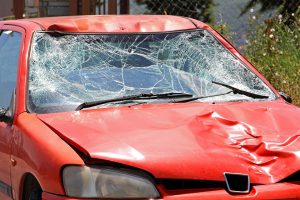 As employees work from home and schools offer remote learning, traffic volumes remain low across Massachusetts. This may mean less stressful driving at times. Yet it can also lead to an increased risk of car accidents caused by speeding.
As employees work from home and schools offer remote learning, traffic volumes remain low across Massachusetts. This may mean less stressful driving at times. Yet it can also lead to an increased risk of car accidents caused by speeding.
Across Massachusetts, traffic volumes are 20 percent lower than last year at this time, according to a MassDOT presentation this month. In some areas, traffic is even lighter. For instance, in the City of Boston, traffic is down as much as 48 percent.
North of Boston, there is an 18 percent decrease in traffic right now, according to the presentation. South of Boston, there is a 19 percent drop in MassDOT District 5, which includes Plymouth County, Bristol County and the Cape and Island. West of Boston, the decreases range from 28 percent to 18 percent.
If you commute, a MassDOT official said there is no peak traffic hour right now. This is true during both the morning and the afternoon/evening commutes. There is a consistent bump in traffic during these times, but nothing near pre-COVID 19 traffic levels.
An easier drive into Boston would be welcome news if not for COVID-19.
Boston is known for traffic gridlock. Many publications and websites have ranked the city’s driving experience among the worst in the U.S. Most recently, we earned a new honor, when WalletHub ranked Boston the 83rd worst of 100 driving cities.
According to the survey, Boston drivers log the most hours sitting in traffic congestion each year, along with drivers in New York City, Chicago, Philadelphia and Washington D.C. The rankings also noted Boston drivers are more likely to have a car accident than those in other cities.
Boston was ranked among the top 5 cities where drivers were most likely to have a traffic crash. This list also included the California cities of Oakland and Los Angeles, Washington D.C. and Baltimore, Maryland.
Speeding Accidents
Right now, there are fewer cars on the road. This may sound safer.
But NECN recently reported on the dangerous trend of drivers speeding into open roads. In Iowa, the state patrol recorded a 101 percent increase in drivers speeding 100+ mph from January through August. There was also a 75 percent increase in tickets for drivers who were traveling 25 mph or more over the speed limit.
In California, the highway patrol issued more than 15,000 tickets from mid-March through August 19 for speeding over 100 mph. This was a 100 percent increase over the same period in 2019.
Then, there is Ohio. Between April and September, state troopers issued 2,200 tickets to drivers traveling more than 100 mph between April and September. This marked a 61 percent increase from the same time last year. The highest speed was a stunning 147 mph.
Speeding can cause serious and fatal injuries, even when traffic is light. In April, there were 28 deaths, compared to 27 in April 2019 – despite half the traffic.
Like other states, Massachusetts has seen an alarming number of drivers cited for speeding. In March and April alone, Massachusetts police issued 15,071 speeding citations, including 259 drivers traveling at 100 miles or more, according to a Boston Herald report.
Police cited 1,035 drivers for traveling speeds of 90 mph to 100 mph. Another 2,518 were traveling between 80 and 90 mph.
Some of the fastest drivers were traveling even faster, at unbelievable and unsafe speeds. In Stoughton, a driver was caught traveling 140 mph in a 65 mph zone. Two other drivers reached 130 mph speeds in Ludlow and North Attleboro. On Cape Cod, a driver was caught traveling 125 mph.
Speeding is highly dangerous. MGL c.90, § 17 states, “No person operating a motor vehicle on any way shall run it at a rate of speed greater than is reasonable and proper, having regard to traffic and the use of the way and the safety of the public.”
Drivers have a duty to use reasonable care in Massachusetts. This means traveling the speed limit or slower when necessary for safety, even when there is no sign posted. In Massachusetts, cities and towns have a default speed limit of 30 mph in thickly settled or business districts. In 2016, the state passed the Municipal Modernization Act allowing communities to lower default speed limits to 25 mph. Many communities have done so and enjoy the improvements. Near schools and work zones, the speed limit is 20 mph.
Free Legal Consultation – Boston Car Crash Attorneys
If you have been injured, it is in your best interest to consult an experienced car accident lawyer. Since 1992, Breakstone, White & Gluck has represented those injured by negligent driving across Massachusetts, including in Boston, Cambridge, Quincy and the South Shore, the North Shore, Plymouth, Brockton and Cape Cod.
For a free legal consultation, contact our attorneys at 800-379-1244 or 617-723-7676 or use our contact form.
Chilling Reports of Multi-Vehicle Crashes on Massachusetts Highways

Recently, there have been several serious multi-vehicle highway accidents in the Boston area.
Many drivers have chosen backroads for the past few months. Now, as more people are driving again, we want to caution you to drive safely on Massachusetts highways. Recently, there have been some serious highway crashes, including multi-vehicle crashes.
Our safety tips for traveling on local highways:
Stay in your lane. Unless you have to move, staying in your lane is easier for you and more predictable to other drivers. You are also less vulnerable if another driver speeds up behind you suddenly.
Follow the speed limit. Always watch for the posted speeds. Expect to travel 65 mph on major highways and 55 mph on others. But remember you have a duty to use reasonable care. Driving safely may mean you have to slow down due to weather or traffic conditions to protect yourself and other drivers. You may also have to slow down if you approach a crash scene.
Make safe decisions. When you make bad decisions, you increase your chances of causing a car accident. Two very unsafe decisions are drinking and driving and speeding. On a highway, your dangerous decision is likely to cause far more injuries because of the traffic count and high speed. Think about a game of dominoes, without the game part.
Protect yourself near trucks. Try to avoid traveling right near or behind large trucks. If you must, provide them with ample room to avoid a crash.
Be aware that trucks create wind gusts. Keep both hands on the steering wheel and stay focused on the road.
Back off when a truck driver signals a lane change. On highways, the average truck needs an 8-second gap or 700 feet to change lanes, according to the AAA Foundation for Traffic Safety. This is the length of 2 ½ football fields.
Give emergency vehicles room to work. In Massachusetts, the Move Over Law establishes that drivers have duty to move out of the way of emergency responders and vehicles with flashing lights. You can be fined $100 if you violate this law. You are also likely to be held financially liable if you cause someone injury or property damage to a motor vehicle or a highway fixture, such as a sign or a guardrail.
Do not use cell phones on highways. Distraction and high speeds are not a safe combination. Avoid cell phone use on highways – or at least go hands-free. Picking up your cell phone to call someone and texting while driving are against the law in Massachusetts.
Recent Highway Accidents in Massachusetts
3-Car Crash Kills Young Girl on Route 6 in Westport. Two drivers collided on Route 6 in Westport on the morning of Sunday, Sept. 13. After assessing the damage, they decided to keep driving and to address the situation after clearing the highway. But as the cars started to move, a Jeep Grand Cherokee slammed into the vehicles, one of which was carrying a 10-year-old girl who was killed and her 9-year-old sister, who suffered serious injuries.
7-Vehicle Crash on I-93 in Dorchester. In late August, news outlets reported a tragic multiple car crash on I-93 in Dorchester, just after 7:30 p.m. According to the Cape Cod Times, a 39-year-old female driver hit a highway barrier and an ambulance, then died from her injuries. She was not the only victim. The crash involved a total of 7 vehicles and several people were transported to receive medical care.
Wrong Way Crash Kills 2 in Brockton. Meanwhile in Brockton, a 30-year-old driver allegedly drove in the wrong direction at 3 a.m. Her Volkswagen Jetta struck a Hyandai Santa Fe, colliding and killing two people inside The Brockton car crash occurred on the Reynolds Memorial Highway and as of August 23, was under investigating by the Plymouth County District Attorney’s office and the Brockton Police. A third driver in a Chevy Tahoe was involved in the crash, but refused medical treatment (Source: NBC Boston).
Littleton Truck Crash on Route 2. In July, there was a very serious crash involving a tractor-trailer and two pick-up trucks on Route 2 in Littleton. Surprisingly, no one was injured in the multi-truck crash. However, emergency crews had to close down the eastbound side of the highway to recover the vehicles.
According to WHDH, emergency responders found the tractor-trailer and one of the pick-up trucks off the road on the guard rail. The other pick-up truck was overturned. Police were investigating the cause of the truck crash, according to WCVB-TV.
Free Legal Consultation – Boston Car Accident Lawyer
If you have been injured by someone’s negligent driving in Massachusetts, contact the lawyers of Breakstone, White & Gluck in Boston to learn your legal rights. If you have been injured in a multi-car highway crash, this is even more important. Highway crashes may involve several drivers and business vehicles or a large truck. The insurance claim process is complex for the individual drivers and passengers involved. As they attempt to find their way, the companies can mobilize quickly to defend their financial interests. It is vital that you act immediately to protect your rights.
Contact our Boston car accident attorneys for a free legal consultation: 800-379-1244 or 617-723-7676 or use our contact form.
For Massachusetts Parents, Resources from Child Passenger Safety Week
 While there is so much going on right now, we want to put a spotlight on Child Passenger Safety Week. The safety week began Sunday, Sept. 20th and continues through Saturday, Sept. 26th.
While there is so much going on right now, we want to put a spotlight on Child Passenger Safety Week. The safety week began Sunday, Sept. 20th and continues through Saturday, Sept. 26th.
Motor vehicle accidents are the leading cause of death among children in our country, according to the CDC. Parents, of course, want to protect their children and follow Massachusetts car seat and safety belt laws. But this can be a challenge as children outgrow car seats, especially during COVID-19, when most shopping has to be done online.
We hope parents and grandparents find the resources on this page helpful. Remember, you want to find a car seat that fits your child and your vehicle. You also want to feel comfortable using it each day. A second-hand car seat may work for you. But for many people, we encourage to you start with a new car seat if you can.
In Massachusetts, children must ride in federally-approved passenger safety seats. They must ride in a car seat from birth until they reach age 8 or stand more than 57 inches tall. Children must be properly fastened and secured according to the manufacturer’s instructions. But where should you start? This is where parents often grow frustrated, as there are different car seats based on a child’s age and size. We will get you started: Children should start with rear-facing car seats until they reach the top height or weight limit set by the car seat maker. They will then move to a forward-facing car seat, then finally a booster seat.
Here are some resources:
- Child Passenger Safety Week. Read safety resources from the National Highway Traffic Safety Administration.
- Find the Right Car Seat. Check out this NHTSA chart on finding the right car seat.
- Massachusetts Car Seat Resources. Most years, the state of Massachusetts and local communities offer free car seat inspections and fittings for parents. This is an invaluable opportunity for parents. Due to COVID-19, you can expect fewer – if any – in-person car seat inspection opportunities. We suggest you start by visiting the state web page. Here is another helpful resource: Massachusetts Car Seat FAQs.
- Watch a How-To Video. While it may not be the same as an in-person inspection, the NHTSA offers helpful videos to help parents secure children at different stages.
- Keeping Asking for Help. If you are still unsure about your car seat, it is alright to keep asking for help. Try asking a family member or friend. You can also try your pediatrician’s office or visit your local police department’s website to see if they are offering car seat inspections at this time.
- Check Your Car Seat for Recalls. Check www.cpsc.gov to see if your car seat has been recalled. If you find a recall, call the manufacturer immediately and ask for the recall action. Often, a company will send a replacement part. But they may issue you a refund and ask you to return a defective car seat to a local store. Always follow a manufacturer’s instructions on disposing a recalled product.
- Register Your Car Seat. It’s easy to become distracted when you buy a car seat or a major item. Did you forgot to register yours? Take a minute to visit the manufacturer’s website now. Better late than never on this one. If there is a recall, this is the best way to get timely notification.
- Buckle Children Up Last. Pack everything up for the day in your car – work bags, backpacks, sports gear and lunch boxes – then buckle your child into their car seat last. This way you can always keep them in sight and talk to them as you get ready.
About Breakstone, White & Gluck – Boston Car Accident Lawyers
With more than 100 years combined experience, Breakstone, White & Gluck represents those have been injured by negligence and wrongdoing in Massachusetts. We specialize in the handling of personal injury, medical malpractice and car accident cases, including the representation of cyclists and pedestrians who have been injured. To learn more about our work, read our Car Accident Case Results page.
For a free legal consultation, contact our lawyers at 800-379-1244 or 617-723-7676 or use our contact form.
Planning a Safe Summer Road Trip in Massachusetts
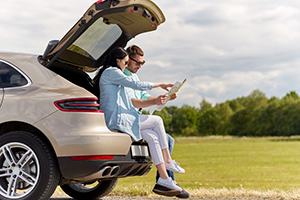
Planning is the key to a safe summer road trip.
By now, many of us are ready for a summer road trip. Maybe you cannot reach your first-choice destination due to COVID-19 travel restrictions. Or maybe you are just taking it slow with a day-trip. Whatever your plan, we hope you can fit in some fun while practicing safety.
First, make sure your vehicle is ready. Check your vehicle’s systems. By taking some time now, you are less likely to breakdown or cause a car accident resulting in injury, motor vehicle damage and stress.
Check for Auto Recalls
Find your Vehicle Identification Number (VIN). Then, check the federal auto recall website, managed by the National Highway Traffic Safety Administration (NHTSA). You can also sign up for email alerts from this page.
Each year, there are millions of auto recalls. Drivers are not always properly informed by manufacturers. Without any warning, drivers keep operating vehicles, increasing the risk for a malfunction. Be pro-active about checking on auto recalls. The thorough database contains recalls up to 15 years back. One caveat is the database does not identify vehicles which were recalled but have now been repaired.
Collect Your Owner’s Manual
Make sure you have your owner’s manual in your glove compartment, along with your motor vehicle registration and auto insurance information.
Have Your Car Serviced
Before you travel:
- Check your vehicle maintenance records
- Schedule a tune-up, oil change or battery check as needed
- Check when your car last had a tire rotation
- Make sure your air conditioning system is properly working as well
If you have any questions, schedule an appointment with a mechanic or garage.
Roadside Assistance
Purchase an auto club membership before you travel. Due to COVID-19, you may not be traveling as far as you wanted this year. You may just be day-tripping to Cape Cod. Still, anytime you travel on the highway, an auto membership is a valuable tool.
Stocking Up
The NHTSA advises drivers to stock up on essential supplies before you travel.
- Cell phone and charger
- Nonperishable food, drinking water and medications
- Paper or printed maps (in case you lose cell phone coverage)
- First aid kit
- Flashlights
- Flares and a white flag
- Jumper cables
- Tire pressure gauge
- Jack
- Work gloves and extra clothing
- Extra windshield washer fluid
Checking Inside the Car and Mirrors
Remember to check your seatbelts and car seats to make sure they are properly functioning. If you have a young child, they may have outgrown their car seat over the past few months. Replace car seats right away.
Check your mirrors. Your rearview and sideview mirrors should be securely in place to help you view your surroundings. If you have a back-up camera, make sure it works. If you don’t have a back-up camera and you have time, consider purchasing an add-on camera. Consumer Reports offers tips: “How to Add a Back-up Camera to Your Car.”
Travel Planning
Before you travel, check the weather and road conditions along your route. Familiarize yourself with the directions before you go. You may use a global positioning system. But when visiting new places, also consider printing travel maps or writing down notes, such as toll locations and rest stops. Write down key phone numbers, such as for hotels. Gather this in a folder or binder.
Share your travel route with a loved one or friend. Keep an emergency contact’s information available, such as in your wallet or the password lock screen of your phone.
If you are traveling within Massachusetts, you can check traffic conditions on Mass511.com. Cape Cod travelers can check the Cape Cod Commission’s Real-Time Traffic Updates. This contains information about Cape Cod car accidents, road closures and construction projects.
Hands Free Cell Phone Systems
On April 1, 2020, the Massachusetts hands-free driving law took effect. Now, all six New England states ban texting while driving and handheld cell phone use.
What you can do: If you want to use your cell phone, purchase Bluetooth and hands-free driving equipment before you travel. If you cannot GPS through Bluetooth or an in-vehicle system, you can purchase a cell phone mount for your dashboard.
Cell phone-related car accidents often ruin vacations while causing serious injuries. Our best advice is to focus on the road and set your cell phone aside. Enjoy the time with your family or friends. Check your messages at the end of the day.
Children and Heatstroke
Children can suffer heatstroke when left alone in a vehicle. A child’s body temperature rises 3-5 times faster than an adult’s and injuries can happen quickly, according to the NHTSA.
Come up with a family plan for traveling this summer. Never leave your children alone in your car in parking lots, when you visit family and friends or any time you make quick stops. Your car is a powerful piece of machinery. Everyone in and out of the car together. Or if you have two adults, designate one your driver, who stays in your vehicle with your children and the air conditioning. Let the passenger get out and do your errands.
Free Legal Consultation – Boston Car Crash Lawyers
Breakstone, White & Gluck and our Boston car accident attorneys fight for the rights of those injured by negligence and wrongdoing in Massachusetts. Our attorneys represent those injured across Massachusetts, from Boston and Cambridge to the North Shore and Quincy and the South Shore and Cape Cod.
If you have been injured in a motor vehicle accident, learn your legal rights. Consult Breakstone, White & Gluck at 800-379-1244 or 617-723-7676 or use our contact form.
Backover Accidents Endanger Children
 It is frightening to watch a driver back up toward a child at play. At least 50 children are victims of backover accidents each week, according to KidsandCars.org. More than 70 percent of backover accidents involve young children and a parent or a relative. Many of these car accidents occur right in home driveways.
It is frightening to watch a driver back up toward a child at play. At least 50 children are victims of backover accidents each week, according to KidsandCars.org. More than 70 percent of backover accidents involve young children and a parent or a relative. Many of these car accidents occur right in home driveways.
As traumatic as backover accidents are, many injuries are preventable. Drivers can recognize the safety risk and make use of technology. Families can communicate and plan. Involve friends and family who visit and park at your home in this conversation. Before they arrive, suggest a safe parking space.
As a Massachusetts driver, you can help prevent backover accidents through a combination of steps. You can use a back-up camera. Stay aware of your blind zone. Near children, the most effective prevention may be getting out and walking around your vehicle. Make sure you have a clear path of travel and if you don’t, be patient. Stay where you are for an extra few minutes until the children have gone back inside.
For Families:
Comings and Goings. Start by keeping your family together when someone arrives and departs. Keep children inside and let them wave to the driver from the window. If children are outside, an adult should be outside supervising them. Gather together on the front steps or a safe place. Hold on basketball, bikes or riding toys until the person leaves. It’s hard for a young child to resist chasing a ball.
Driveway Barriers. Parents can keep traffic cones in the shed. Put the cones out in your driveway when you are concerned or to block delivery drivers from pulling. You can also look into portable neon driveway fencing products.
For Drivers:
Walk Around the Vehicle. Even if drivers have a back-up camera, walk around your vehicle. Check underneath your vehicle and observe if a child or anyone is nearby or may move into your path of travel (such as a child riding a bike or someone pushing a shopping cart).
Park Consistently. If you are a parent or live near children, park your vehicle in the same place in your driveway or garage each day. Be consistent with your approach. Whether you pull in or back into your driveway or garage, make sure children are in a safe place. If you are a parent, keep children in the backseat if you back in. Come to a complete stop, turn and check on your children in the backseat, then get out of the vehicle together.
Large Vehicles. Trucks, SUVs, RVs and vans are more likely to cause backover crashes, according to NHTSA. The taller the vehicle, the greater the driver’s blind zone.
Blind Zone. The blind zone is the area behind a vehicle which a driver can’t see. Whatever vehicle you drive, learn about your blind zone. Consumer Reports found small sedans usually have a 12 foot blind zone for the average driver. Midsized SUVs have an 18-foot blind zone, while large SUVs have 19 feet. Pick-up trucks have the largest blind zone among the passenger vehicles – 24 feet.
Back-up Cameras. As of May 2018, all new passenger cars, trucks, vans and other vehicles weighing less than 10,000 pounds have to be outfitted with rearview monitoring technology, according to Edmunds.com. If you are driving an older vehicle, you can install a back-up camera on your own – and it is an important tool which can save lives. Read “How to Add a Backup Camera to Your Car,” by Consumer Reports.
Bicycles and Pedestrians. Backover accidents can also injure adults, including cyclists and pedestrians. Look all around your vehicle before you pull out of a parking space. Be aware of different types of activities and movements in downtown and other business areas. When possible, avoid parking near crosswalks.
Parking Lot Crashes. In parking lots, pull into parking spaces whenever possible. Keep watch of pedestrians and shoppers when you pull out or back out of spaces. Set aside cell phones and do not drive when you are overfatigued.
Another note is right now, many Massachusetts grocery stores, retailers and restaurants are offering curbside pick-up services. While convenient, remember not every business is experienced with this. Drive into parking lots slowly and watch for curbside pick-up signs. If there are no signs, find a parking space and call the store. Always watch for pedestrians, who are also just figuring this all out.
Boston Car Accident Lawyers – Free Legal Consultation
At Breakstone, White & Gluck, our Boston car accident attorneys specialize in representing victims of car accidents and pedestrian accidents. We represent those injured across Massachusetts, from Boston and Cambridge to the North Shore to Quincy and the South Shore and Cape Cod.
For a free legal consultation, contact our attorneys at 800-379-1244 or 617-723-7676 or use our contact form.
Distracted Driving Laws Are Saving Teen Lives, Research Says
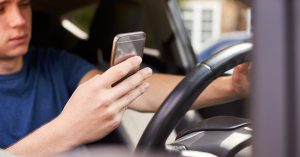
Distracted driving laws are reducing teen driver crashes, study says.
When drivers use cell phones, they introduce grave dangers to the road and are more likely to crash. This is why many states have now passed distracted driving laws. But how effective have these laws been?
Highly effective, suggests new research. Distracted driving laws are saving the lives of both teen drivers and their passengers in car crashes. The greatest impact is seen when states ban all drivers from cell phone use, not just junior operators under age 18.
Researchers at Massachusetts General Hospital published the findings from a 10-year study in Pediatrics journal. Reviewing more than 38,000 motor vehicle crashes reported between 2007 and 2017, researchers found a significant decrease in fatal motor vehicle crashes among drivers age 16-19.
There was actually a 43 percent reduction in deaths among 16-year-old drivers in states which passed hand held cell phone bans for all drivers (not just a ban for junior operators under 18).
Researchers had the challenge of working with evolving cell phone laws. When the study began in 2007, just 15 states had passed one type of distracted driving law, often a texting while driving ban. By the end, researchers were reviewing the impact of multiple bans, including texting while driving bans (both primary and secondary), hand-held bans and bans on all types of cell phone use for drivers under age 18.
Distracted Driving In Massachusetts
Massachusetts distracted driving crashes are a serious concern, having caused the deaths of drivers as well as pedestrians and cyclists. Once drivers pick up a cell phone, it is hard to break their attention away. The younger the driver, the harder it can be and this makes it essential for teens to establish good habits from the start.
In Massachusetts, a high school student was the first to be criminally prosecuted for motor vehicle homicide, texting while driving and negligent operation of a motor vehicle, according to CNN. Police allege the 17-year-old Haverhill man exchanged nearly 200 text messages in the hours leading up to the fatal crash in 2011. The crash killed a 55-year-old New Hampshire driver and seriously injured his girlfriend, who was riding in his passenger seat. As the prosecutor said at sentencing, “there are no winners today.” He went onto say, “…in a split second, many lives are forever changed.”
The state of Massachusetts reported a 170 percent increase in distracted driving crashes between 2014 and 2016. Over the past few years, lawmakers and safety advocates negotiated proposals to pass a hands-free law or a ban on handheld cell phone use. This finally reached resolution in November 2019, taking effect in April.
Under the Massachusetts Hands-Free Law, drivers are no longer allowed to use hand-held cell phones. They must now use voice-activated technology. The goal is to reduce injuries by taking away the act of reaching for a phone and attempting to dial. However drivers must still use voice-activated cell phones cautiously. Drivers can still cause accidents when using voice-activated technology and can still be held liable if they cause someone’s injuries.
Teen drivers – Massachusetts junior operators under age 18 – are still not allowed to use hands-free cell phones under the new law.
Free Legal Consultation – Boston Car Accident Attorneys
At Breakstone, White & Gluck, our attorneys fight for the rights of those injured by negligent driving in Boston and across Massachusetts. With more than 100 years combined experience, we have a reputation for strong results for victims of car accidents, truck crashes and bus collisions.
If you have been injured, call our attorneys for a free legal consultation: 800-379-1244 or 617-723-7676 or use our contact form.
Study: Teen Driving Accidents Claim More Than 7 Lives Each Day of Summer
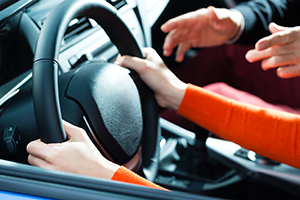 We know many Massachusetts parents regularly talk to their teens about safe driving to prevent car accidents. You should be commended for engaging in this often-stressful conversation.
We know many Massachusetts parents regularly talk to their teens about safe driving to prevent car accidents. You should be commended for engaging in this often-stressful conversation.
We urge you to continue on this summer. Helping teens understand the difference between appropriate and unsafe choices and build strong driving skills is a life-long investment in their safety and the safety of others.
Nationwide, teen driving crashes killed more than seven people each day of summer from 2008 to 2018, according to AAA Foundation for Traffic Safety. AAA recently released the 2020 “100 Deadliest Days” of driving report, once again warning teen drivers and parent to take extra precautions between Memorial Day and Labor Day.
Be aware of the unique risks this summer, AAA says. In response to the COVID-19 pandemic, many summer jobs and activities have been cancelled. With more free time, teens may be driving more. AAA urges parents to read its 2020 “100 Deadliest Days” report, and its Parent Coaching Guide, and to have teens sign a safe driving agreement. With this approach, parents can set clear expectations for teens and refer them to the agreement should they forget. If teens violate the terms of the agreement, they may lose driving privileges for a period of time.
Research on Teen Driving Crashes
Here are a few figures for parents to consider. AAA’s research found more than 70 percent of teen drivers age 16-18 had engaged in unsafe and illegal driving behaviors.
Seat belt Use
17 percent of teen drivers admitted to not wearing a seat belt.
Speeding
47 percent of teen drivers admitted to driving 10 mph over the speed limit on a residential street.
40 percent of teen drivers admitted to driving 15 mph on a freeway.
Texting and Cell Phone Use
35 percent of teen drivers admitted to texting while driving.
Other Driving Violations
More than 30 percent of teen drivers admitted to running red lights and aggressive driving. Meanwhile, 25 percent of teen drivers admitted to drowsy driving.
Parents can influence teens on some of these behaviors by developing a teen driving agreement (there are several available on the Teen Driver Source website). Your conversations with your teens are also essential.
Help Your Teen Drive Safely
Help your teen drive safely and avoid a car crash.
Many states have graduated licensing laws, including Massachusetts. Encourage your teen to follow the Massachusetts Junior Operator Law at all times. Under this law, teens are not allowed to use cell phones when driving in Massachusetts, not even under the new Massachusetts “hands-free” driving laws.
When they have a question, encourage them to ask, review their driver’s education materials or the Massachusetts Driver’s Manual. When drivers understand the law, they are more confident making decisions on the road.
Another opportunity is to drive together. Take turns in the driver seat. When you drive, take the opportunity to show your teen how you follow the speed limit. On a 30 mph street, this means driving 30 mph or less, not 35 or 40 mph. Tell your teen what you are doing and why.
Speed-related crashes are prevalent among teens. Simply slowing down and following other vehicles at greater distances can make a tremendous impact in reducing car accidents. At slower speeds, your teen has more time to stop and if they have a collision, injuries are likely to be less severe. Accident victims are more likely to survive a teen driving accident.
At the same time, parents should understand that when teens speed, they may be intentionally speeding and risk-taking. This is unacceptable. But often, the reason is driver inexperience. Teens need more practice using the gas and brakes, and you may need to explain that traveling “just” 5 mph or 10 mph over the speed limit is dangerous. In fact, you may need to do this a few times, also explaining that teens are more likely to cause injury when they speed and receive a speeding ticket which will impact their junior license.
To help your teen, be patient. Your goal is to demonstrate safe driving techniques and give them feedback when they make a good decision or make a mistake. Yet, if you are too critical, you will make your teen nervous and reluctant to drive with you. Tread lightly but firmly. It’s alright to take a break, but don’t stop trying.
Free Legal Consultation – Boston Car Accident Lawyers
At Breakstone, White & Gluck, our Boston car accident attorneys represent those who have been injured by negligent driving in Massachusetts. Car accidents often result in serious and catastrophic injuries, including head injuries, spinal cord injuries, broken bones, lacerations and death. When victims survive, they may require medical care, have to take time off from work and suffer other financial losses.
Always learn your legal rights after an injury. For a free legal consultation, call our car accident attorneys at 800-379-1244 or 617-723-7676. You can also use our contact form.
More Than Half of All Car Crashes Happen in Intersections
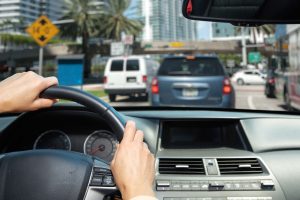
Practicing safety at Massachusetts intersections.
If you traveled to Cape Cod or the North Shore this Memorial Day weekend, you most likely crossed many intersections and maybe a few rotaries.
Our Boston car accident attorneys want to take a moment and write about traveling safely through Massachusetts intersections. This is a fundamental, one of the first lessons for student drivers. Yet the reality is, more than 50 percent of all traffic crashes resulting in injuries or death occur in or near intersections, according to the U.S. Federal Highway Administration.
Intersections can be challenging. Drivers can make mistakes. Large trucks can take wide turns, causing serious accidents. And some intersections need improvements.
But often, accidents happen when drivers stop at traffic signals and just stop paying attention to the road. They may be fatigued; their thoughts may wander elsewhere. When traffic starts moving again, the driver may step on the gas without checking for pedestrians, cyclists or traffic around them.
Then there are outright reckless actions. Unfortunately, these endanger everyone in the intersection. These drivers are aggressive and may speed or drink and drive. These drivers may be cited for speeding and other traffic violations, but they can also be criminally charged for their actions. When a driver causes personal injury or death in Massachusetts, they may also be held liable for the victim’s injuries.
Massachusetts Laws for Driving Through Intersections
Travel Slowly. As a driver, always travel slow enough to stop or yield to pedestrians, cyclists and other vehicles. You also have to remember other bystanders on sidewalks, such as foot traffic from restaurants and shops. Be prepared for them to make an unexpected move.
Right of Way at Intersections. As a driver, you must understand when you have the right of way and when you have to yield in intersections. You can find some of the rules contained in M.G.L c. 89 § 8. As for right of way, when two vehicles arrive at an intersection at the same time, the driver on the left shall yield the right-of-way to the vehicle on the right.
Drivers must also yield to other vehicles before turning left. When stopped at a steady red light, drivers can make either a right turn or on a one-way street, they can make a left turn to another one way street. They must yield the right-of-way to pedestrians and other traffic as directed by the traffic signal.
Yielding to Cyclists. Drivers may only turn right if they can do so at a “safe distance from the bicyclist at a speed that is reasonable and proper,” according to M.G.L. c 90 § 14.
When drivers turn right near cyclists, there is a high risk for a right hook crash. As best practice, before making a right turn, drivers should fully check around their vehicle, including behind. They should make use of their rearview and sideview mirrors.
If there is a cyclist, they are most likely to be in the bike lane to your right (though in Massachusetts, cyclists are also allowed to travel in the traffic lane in front or behind you). Yield to them and let them turn right first. You want to keep the cyclist well ahead of you. Then travel slowly because there may be other cyclists nearby.
When drivers turn left, conditions are different. Drivers are most likely to encounter a cyclist coming from another direction. They can avoid a bicycle crash by continuing to scan the intersection and waiting until there are no cyclists.
Yielding to Pedestrians. Pedestrians are safest at intersections marked with crosswalks and traffic signals, which provide “Walk” lights. Drivers must stop at these traffic signals. M.G.L. c 89 § 11.
The best way to avoid a pedestrian accident is to stay well behind the crosswalk line and stay alert throughout the light. Do not check your cell phone, even in hands-free mode.
Put Down Your Cell Phone. Under the new Massachusetts hands-free law – or M.G.L. c 90 § 13B – drivers are not allowed to pick up their cell phones, including at stop signs or traffic signals. Drivers are allowed to use voice-activated technology, but we urge you to set your cell phone and all in-car systems aside. Let calls go to voicemail. Instead, use this time to check traffic conditions around you and get ready for the green light.
Read your Massachusetts Driver’s Manual. While this won’t make your summer reading list, the Massachusetts Driver’s Manual is available online. As a Massachusetts driver, you can access this anytime you have a question. We suggest reading page 111, which explains the Dutch Reach method for safety near cyclists and how to prevent a dooring injury to a cyclist. This is worth noting because cyclists and pedestrians may be traveling in different areas over the next few months as Massachusetts recovers from COVID-19.
About Breakstone, White & Gluck
Since 1992, our Boston car accident lawyers have represented victims of negligent or reckless driving, helping them recover financial compensation for injuries, lost wages, pain and suffering and other damages. We represent those injured in the Boston region, including in Boston, Cambridge, Somerville, Everett, Lynn, Quincy, Newton and Watertown. We also represent clients injured in Cape Cod car accidents.
For a free legal consultation, contact Breakstone, White & Gluck at 800-379-1244 or 627-723-7676. You can also use our contact form.
Keeping Your Massachusetts Auto Insurance Policy in Good Standing During COVID-19 Emergency
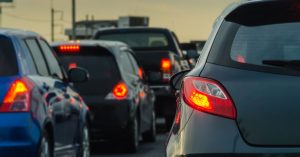
Save yourself time and frustration. Our tips for keeping your Massachusetts auto insurance policy in good standing during the COVID-19 state of emergency.
Be proactive and keep your auto insurance policy in good standing during the COVID-19 emergency. When you move or cannot make payment, let your auto insurer know in advance. This will save you a great deal of time, frustration and money during an already stressful time.
First, some news on a small savings. Due to a decrease in driving, many insurers have committed to giving Massachusetts drivers a 15 percent discount for April and May (roughly $30 in savings on a $1,200 policy), according to The Boston Globe. Not a large savings, but you don’t have to be proactive here. Just look for the credit to appear on your premium statements or a rebate check to arrive in the mail.
How Auto Insurance Works For You
Auto insurance is a critical tool in protecting yourself and your family from injury and major financial loss in a car accident or truck crash. If you were negligent in a car crash, you need to have coverage to financially compensate any victims for their medical expenses and other losses. This protects your other financial assets.
When another driver is at fault and causes your injuries, you should be entitled to seek compensation from their auto insurance policy. What’s unfair is this coverage may not be available if the driver is uninsured or is underinsured and has only purchased the state’s minimum requirement for compulsory coverage.
Many drivers should also purchase optional coverages to protect themselves. Read more in our article, “Understanding and Buying Massachusetts Car Insurance.”
Keep Current with Auto Insurance Billing
If you are unable to pay your auto insurance premium, notify your insurance agent or insurer in advance of your payment date. Auto insurers have the right to cancel your policy for non-payment and they can do so in short time. This can lead to extra fees and take up a lot of your time. The worst scenario is if you are stopped by a police officer when your auto insurance has lapsed. You could be fined and your license could be suspended, adding another layer of time and frustration.
Avoid this stress. Call your insurer and request a payment extension. The Massachusetts Department of Insurance has advised insurers “to work with consumers to be flexible and make every possible effort to avoid policy cancellation.” Read this advisory.
And if you don’t have electronic access to your auto insurance policy, ask about setting it up now so you can monitor your account.
Update Your Address
The Massachusetts Department of Insurance calls this “the single most important thing you can do to protect yourself from a claim denial.” Your insurer sets your premium in part based on your address and the risk of collision there. If you don’t update your address, your insurer may still pay claims for your compulsory coverage. Very likely they will deny claims for your optional coverages.
If you have moved or returned home from college, notify your insurer that you have changed your address and are garaging your vehicle in a different location. Your insurance company may (or may not) provide you with some leeway up to 30 days. Regardless, update your policy immediately. You also have an obligation to update your motor vehicle registration and license and you can do this online.
Don’t own a car? Remind your family members to add you back to their policy.
Reconsider Your Coverages
As Massachusetts looks to reopen, some workers will telecommute. Still, we urge you not to reduce your auto insurance coverages to save money. Not yet. But start a conversation with your auto insurance agent about your current coverages and if they meet your needs.
Start by asking about your optional coverages. Specifically, do you have enough MedPay coverage? And do you need more underinsured and uninsured coverage? A note, if you can only raise one, purchase more MedPay, which will help pay your medical bills. For a few dollars, you can increase your coverage by $10,000 or more and this makes a big difference). Then consider raising your underinsured and uninsured coverages as well. If you do, make sure you purchase the same amount of bodily injury coverage.
If you are spending more time on a bicycle, we urge you to wear a helmet first and foremost. You will also benefit by adding auto insurance coverages to help with your medical expenses and other losses. You may be able to add coverages to your own auto insurance policy or to a household policy. Read our article, “What Every Massachusetts Bicyclist Needs to Know About Car Insurance.”
Going forward, if you transition to working at home more, monitor your mileage. You may be able to request a low mileage discount and save money without losing any coverage.
Also, consult your insurance agent if you begin driving as part of a new job or as an independent contractor for a restaurant or business. If you are in a car accident while making work deliveries, your private passenger auto insurance policy will not cover you.
The Massachusetts Department of Insurance advises drivers and businesses to ask their insurers about endorsements for delivery drivers during the Massachusetts COVID-19 state of emergency. Read the state’s advisory, “Insurance FAQs During COVID-19 Public Health Crisis.”
About Breakstone, White & Gluck – Boston Car Crash Lawyers
Breakstone, White & Gluck is consistently recognized as a top-rated personal injury law firm in Boston. With more than 100 years combined experience, our attorneys have assisted thousands of car accident victims in Boston, Cambridge, Quincy and across Massachusetts. We have a track record of successful results covering nearly 30 years.
For a free legal consultation, contact Breakstone, White & Gluck at 800-379-1244 or 617-723-7676. You can also use our contact form.



